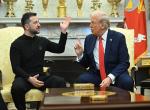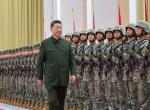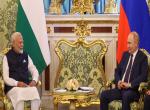Premise
This work is based on the premise that the current level of defence exports in India is well short of its stipulated targets and there is a need for revamping the same.
Layout
The analysis is laid out as under:-
- Current status vis-à-vis stipulated targets: the extent of gap.
- Policies to drive production (hence exports).
- Strategies for export promotion.
- How the strategies have rolled over time?
- How to make exports happen? – A viewpoint.
Current Status vis-a-vis Stipulated Targets: The Extent of Gap
Current Status
The current status of defence exports was recently provided by the Minister of Defence for State Mr Ajay Bhatt who, while replying to a starred question in the Parliament made the following statements[1]:-
- The total value of defence exports from the FY 2014-15 to 2020-21 is 38500 Crs.
- The value of defence exports for the FY 2019-20 was 9115.55 Crs. The same for 2020-21 was 8434.84 Crs.
Stipulated Targets
The targets for defence export have been laid down in a document titled Draft Defence Procurement and Export promotion Policy or DPEPP promulgated by the Ministry of Defence (MoD) on 03 Aug 2020[2].
DPEPP was meant to be an overarching document that was to provide a focussed, structured and significant approach for enhancing the defence production capability of the country under the overall umbrella of Atmanirbhar Bharat and Make-in-India. In a nutshell, the objectives of DPEPP were to make Indian Defence industry dynamic, competitive and robust, reduce import dependence, enhance exports, reward innovation and create Indian IP.
DPEPPstipulated a Defence production target of Rs 1,75,000Crs (25 Bn USD) by 2025 which included Defence exports worth 35,000 Crs ( 5 Bn USD) [3].
Compared to 35,000 Crs (by 2025) , the current levels of 8K/9K Crs gives out the extent of gap between where we are and where we ought to be four years from now. Also, there has been a year-on-year drop in the last two FYs.
Can everything for the above gap be ascribed to the Covid blues? Certainly not. There are many other areas that have under-performed. These are explained.
Policies to Drive Production
Defence exports are linked one-on-one with defence production. Only if the defence production rises, there will be ‘exportables’. DPEPP 2020 realised this and laid down eight specific thrust areas for increasing the overall defence production of which, export promotion was one of the areas.
Laying down thrust areas was not in thin air. Each of these was backed up by specific ‘action points’ meant to achieve the target envisaged. It is essential for the reader to understand the macro picture of thrust areas put in place to drive the overall defence production in order to see the how the growth in exports forms a part thereof. The same are briefly stated.
Eight Thrust Areas laid down by DPEPP.
- Procurement Reforms
DPEPP believed that the need to bring in major reforms in the processes and policies connected with defence procurement was the key for enhancing defence production (and hence exports). Following action points were identified (details not explained):- - Taking out a ‘Negative Import List’ that puts a year-on-year embargo on imports.
- Setting up a Project Management Unit to bring in best practices in procurement procedures.
- Carrying out a comprehensive restructuring of trials and testing procedures.
- Renaming the Rule Book by replacing the passivity of the ‘procurement mind-set’ (Defence Procurement Procedure) with assertiveness of an ‘acquisition mind-set’ (Defence Acquisition Procedure).
- Indigenisation Support to MSMEs
- Taking out an Indigenisation Policy and setting out a target of indigenising 5000 items by 2025.
- Setting out indigenisation portal for defence public sector undertakings (DPSUs) and Ordnance Factory Board (OFB).
- Providing every possible support to MSMEs (hand-holding, subsidies, financial packages, GST relaxations, order reservation/preference etc.).
- Optimise Resource Allocation
- Setting up a distinct budget head for domestic capital procurement.
- Setting a goal of enhancing domestic production by 15% each year,
- Scrutinising expenditure for productivity, cost,quality and timely execution.
- Investment Promotion and Ease of Doing Business (EoDB) Index
- Enhancing FDI limit from 49% to 74% on automatic route.
- Setting up two Defence Industrial Corridors.
- Taking steps to improve EoDB index.
- Encourage Innovation and R&D
- Setting up Innovation for Defence Excellence (iDEX) portal.
- Encouraging innovators and start-ups through incentives.
- Institutional platforms for DRDO to share technologies for production.
- Disinvestment of DPSUs, Corporatisation of OFB
- Continuing the process of reducing stakes in DPSUs to bring in expert private ownership.
- Carrying out corporatisation of OFB by restructuring the existing Board and Ordnance Factories into seven corporate entities with 100% Govt ownership.
- Revamping Quality Assurance (QA) and Testing Procedures
- Setting up Defence Testing and Infrastructure Scheme (DTIS) featuring state-of-the-art test facilities in the PPP model with 75% Govt funding.
- Selectively opening up defence testing facilities for private sector.
- Export Promotion
- This is explained in some detail.
Strategies for Export Promotion
For export promotion, DPEPP laid down following strategies:-
- Outreach through Defence Attaches (DAS)
An institutional arrangement was to be put in place where DAs deputed in friendly foreign countries (FFCs) were to be actively involved in exploring opportunities and facilitating exports in their host countries. - Earmarking Export Promotion Agencies (EPAs)
Some DPSUs which were producing worthwhile exportable materials were earmarked as EPAs for boosting exports. These were to be rewarded with Success Fees for each export conversion.
- Govt-to-Govt ( G2G) Agreements, Lines of Credit (LoC) and Funding
Efforts were to be put in place for boosting exports by entering into G2G agreements with FFCs, extending LoCs (and even upfront funding) to countries wanting to buy our products on credit withlucrative terms of payment.
- Strengthening the Export Promotion Cell (EPC)
Way backin 2018, the MoD established the EPC to give a boost to defence exports. EPC had a huge agenda-coordinateand follow up on export activities, interact and coordinate with DAs, interact with potential buyer countries, facilitate export promotion activities during exhibitions, coordinate between MoD and Private industry, as well as, various chambers of commerce on export promotion matters, produce and disseminate written and e-material for export promotion etc.
Two years down the line, the DPEPP called for taking stock of EPC and mandated that the same be ‘strengthened’ and ‘professionalised’.
- Revenue Mandate to DPSUs and OFB
DPEPP stipulated that DPSUs and OFB should have 25% of their revenue earning from exports. The success fees claimed to be counted as export revenue.
- On-boarding of IOPs
In order to ensure that there are enough number of Indian companies available for discharging offset obligations of Foreign OEMs, MoD with the help of industry associations was tasked to on-board more and more number of Indian players.
- Milking global showbiz events
Def Expo and Aero India were to be positioned as two major global events for not only showcasing India’s capability in defence manufacture, but also, encourage exports. This was to be coupled with branding of Indian defence products, sending Defence Industry delegations to FFCs and active participation in global defence expositions.
- Upgrading clearance processes
DPEPP laid down that the export clearance processes must be upgraded. The requirement was to make it seamless, time-bound and hassle free by reducing the stages of clearances/approvals and cutting out slack /red tape/duplications etc.
- Open General Licencing (OGEL)
DPEPP mandated that the provisions of OGEL must be fully utilised to encourage exports to FFCs. Potential exporters were to be incentivised through multiple ways (tax cuts, subsidies, GST relaxations etc.)
- Increasing visibility
It was also recommended that the visibility content be increased by showcasing the achievements of Indian Defence industry on the websites of various Indian Embassies.
- Support from Service personnel
DPEPP stipulated that active support of Service personnel be sought in exploring various opportunities for export of indigenous defence products to FFCs.
How the Strategies have Rolled Over Time?
The ‘To-do’ list appears complete
A perusal of the above indicates that the ‘To-do’ list for export promotion is complete. The litmus test is how each of these has rolled. This is briefly enumerated.
- Defence Attaches’ conclave
In order to achieve the desired outreach through DAs, the MoD, in collaboration with a digital platform (bharatshakti.in) has been organising the Defence Attaches’ Conclaves once every year. Five editions of this event have already been conducted.
The author having had a first-hand experience of participating in these events has seen that it is attended not only by almost the entire lot of DAs from FFCs, MoD and public sector heads, but also, the who’s-who of the private sector is present ( Tata, L&T, Mahendras, Kalyanis, Reliance, Adanis, M2K, Zen, Alpha…)
The DAs are being given full coverage and they in turn make big promises and assurances. What after the event? (covered later).
- Def Expos
11 editions of Def Expos have taken place (12th planned in Mar 2022 at Kevadia in Gujarat[4]) involving huge amount of Govt time, money and resources. In the last edition alone in Lucknow, the Govt spent over 150 Crs. Mega events provide huge showbiz opportunities and multiple platforms to push export agendas. Are these events delivering? This is the moot question.
- G2G /LoC/Funding
The idea of G2G Agreements, extending LoCs and upfront funding for delayed pay-ins was great one. How much of it has fructified ever since the policy was promulgated in Aug 2020? Yes, the run time has been just a year plus that too Covid ridden, but the need is for an honest stock-taking.
- EPC Revamping
The EPC was to be revamped by ‘strengthening’ it and ‘professionalising’ it. Has it happened? Not really, looking at their website. How many actual export orders have been secured by EPC over time will be their litmus test. There is not much to show, is the sense of the author.
- Export Mandate DPSUs
DPSUs and the OFB were to have 25% of their revenue earning through exports. Has it happened; probably no? How many success fees have been claimed? Not many.
- Support from Service Experts
Service experts were to be co-opted rendering advice based on decades of multi-disciplinary first-hand domain expertise in exploring potential export avenues. Has any institutional platform established to make it happen? No, not yet.
How to Make Exports Happen? –A Viewpoint
Facing the Fact
The author’s viewpoint is based on the following ground realities as these exist today:-
- The current level of defence export is roughly at 25% of what is stipulated for 2025.
- With the current trajectory, the end-state is unlikely to be achieved in 2025. It will remain far short. At best at 45-50%.
- Everything cannot be ascribed to Covid downslide. Even our strategies have not delivered optimally.
- Something else is required. Out of the box may be.
- Exports are double-edged - we need to tread with great caution. There is much to lose- country’s reputation/credibility and more.
The author’s view point is configured across some specific requirements. These are enumerated.
Requirement 1: Push Up Level of Involvement
Exports won’t really happen bottom-up. Mid-ranking DAs/other functionaries may give any promises in defence enclaves/other forums etc., their clout to actually swing in big export deals worth millions and billions of dollars remains minimal.
In the same breadth, small promotional bodies such as EPC etc. can at best be facilitators/working hands to ensure decisions taken at apex level are implemented with diligence and dexterity.
It is also felt that the show-biz events, however mammoth, will remain show-biz; period. Visitors will come and leave, (some with assurances of all kinds), actual export conversion will remain minimal if the very apex of this country does not colour its hand into it (history corroborates this fact).
Q- What is missing?
A-Level of involvement.
Following is stated:-
- Making defence exports happen must become the agenda of the apex level of the Govt (President, PM, CCS).
- Pro-active approach at apex level (PM, RM) is required to crack deals with counterparts in FFCs.
- G2G and LoC can happen only at this level, nothing short of this. Rest of the Govt machinery+ industry is just there to prepare the stage for the top players to do the final act (easier said than done).
- Something much bigger than merely thrust areas/policies/action points/strategies etc. are required to make exports happen. National interests, common friends/foes, takeaways from international arrangements - QUAD, SCO, SAARC, G15/20, G8 outreach, CHG, BRICS, BIMSTEC, ASEAN regional forum, ITU, etc. must drive exports. Milking special bilateral relations – India-Russia, India-Israel, now India-SA etc. must drive exports. Immediate neighbourhood must be sought after for sale opportunities etc.). It is diplomatic business (read challenge) at the very apex level; nothing less.
- Even during show-biz events – the big players must converge to strike deals cooked by staff over the years.
- A start could be made by PM taking a STATUS CALL in his characteristic style.
Requirement 2: Credibility and Image Trap
Credibility
While exports bring in good money and push up a country’s self-pride, some catastrophic things happen if the buyer realises that the exported goods fail/perform sub-optimally. It not only results in loss of deals/contracts etc., but something much bigger –‘loss of trustworthiness and credibility at national level’, opening the floodgates for a huge national embarrassment!
Another credibility issue is of ‘full package export’. A potential buyer will look not only an individual weapon but a ‘full package’ consisting a life cycle support for spares, repairs, upgrades, overhauls, simulator back up etc. Ideally he would like the seller keep production lines open for the entire expected life-cycle of the product which may extend from 15-25 years.
Image
In a closely interconnected world of today, a prospective buyer will know all good and bad things of our products. For instance, he would know, all the problem areas on which the Indian user is not happy or is having issues of any kind, (spare crises, performance blues, weight, range, accuracy, failure rate, accident record etc.). We must never even attempt to export any product with ‘issues’ or with less than perfect track record. Such sales, even by accident, may boomerang very badly.
Keeping the above in mind, following imperatives are suggested:-
- Even if the export range is kept limited, only tried and tested products must ever pass the export line.
- The product must not have any issue of ‘image’ as described above.
- There must be back up readiness for life-cycle support as enumerated above.
Requirement 3: Building Capabilities
With the above stringent criteria, it is only a few selected products which will pass the litmus test as ‘fit for export’. Once a product qualifies and it is assessed that there is an export market available, the same must be made available for export even if domestic demand exists.
For the above, depending on the assessed type and quantum of demand over time, parallel lines/capabilities must be built to simultaneously supply domestic, as well as, export requirements. No buyer will wait for us to first complete domestic demand and then be served. There are multiple other sellers in the market. It is understood that a product that justifies parallel line would have passed the ‘credibility’ and ‘image’ test as described above.
Requirement 4: Diversify the Canvass (With due Caution)
Our export basket today is largely composed of the following[5]:-
- 5.56 mm cartridges.
- Bomb suppression blankets.
- Hardened armour plates.
- Protective headgear helmets.
- Mortar shell covers.
- Sleeping bags.
- Bullet proof vests.
- Night vision devices.
- Radar parts and sub-assemblies.
- Personal protective gear.
- Advanced Light Helicopter (ALH).
- Offshore patrol Vessels (OPVs).
- Bharti radio.
- Kavach Mod II launcher.
- Light engineering parts.
- Electronics item.
It will be noticed that there are really no ‘big ticket’ items except say for serial 11 and 12.
What it should be… (+the caution factor)
Off late, making a little departure from the above small-item inventory, the Indian pavilions in Defence shows world are displaying a larger canvass. For instance, in the recently concluded 7th edition of the Annual International Military Technical Forum (Forum Army 2021) organised by the Russian Federation in Moscow from 23-28 Aug 2021, the Indian pavilion displayed the following exportables:-
- Tejas all-weather fighter aircraft.
- Atulya Air Defence Fire Control Radar (ADFCR).
- Akash Surface to Air Missile system.
- Netra Airborne Early Warning and Control System (AEWCS).
- Rohini 3D Tactical Control radar (3DTCR).
- Identification Friend or Foe (IFF) system.
- ASTRA Beyond Visual Range Air-to-Air Missile (BVRAAM).
- AdvancedTowed Artillery Gun System (ATAGS).
- Arjun Mk 1A Main Battle tank (MBT).
- Joint Venture Protective Carbine (JVPC).
- NAG and HELINA Anti Tank Guided Missiles (ATGMs)
Important Points of Caution
- While the items in the Indian pavilion are indeed ‘big ticket’, do they pass the following criteria?
- Have these systems being operated tried and tested sufficiently over the years by our own forces thereby generating the type of confidence that these will not backfire in a foreign land?
- Are these cleared from the ‘issues’ criteria byown forces as explained earlier (Tejas, MBT, ATGMs?)
- Do we have quantities available for exports after meeting domestic needs or are parallel lines planned to serve export demands?
- Do we have ‘life cycle support’ up and ready as will be demanded by the buyer (explained earlier).
- Again as said earlier, export will not happen by displays in pavilions, it demands apex level holistic involvement, facilitation and push.
- The ‘good news’ that appears sporadically in the open source needs to be corroborated with the Govt hand-holding at the highest level. A sample:-
- Chairman HAL talking about the ‘vanilla’ cost of one Tejas as Rs 309 Crs and a trainer for Rs 280 Crs for export. [6]
- Russian Dy. Chief of Mission giving NoC for export of JV BrahMos to Philippines and other FFCs. [7]
- Govt approving export of Akash to FFCs and forming a High Level Committee (HLC) to authorise the sale of major platforms to various countries[8].
All and more of the above are serious questions, the answers to which may be difficult/ unavailable/negative at this point in time. This in no way must sound as a ‘dampener’ but is a checklist, all the same.
Action Points List ACTI ON POINT LIST
Having stated all the above, here is a sample action point list:-
- The Govt should constitute a body called the ‘Defence Export Council’ (DEC).
- The DEC should have an Apex Body and a Working Committee.
- The Apex Body must report directly to the PM.
- Composition of Apex Body
- RM
- Def Secy
- Foreign Secy
- CDS.
- President Confederation of Indian Industry/ Chosen representative of private industry.
- The Working Committee reports to EC. Composition:-
- Secy DDP
- DG DRDO
- Chairmen DPSUs
- Presidents/Chairmen FICCI, ASSOCHAM, PHD, SIDM
- Secy MSMEs
- Addl Secy MEA (looking into exports domain)
- DCOAS (P&S)
- Service Chiefs
- A broad perception of the work of EC could run like this:-
- Setting Rules of Business.
- Setting an approved frequency of reporting to PM.
- Mapping the current export status.
- Assessing ‘worthwhile exportables’. (Keeping criteria in mind).
- Setting some targets and assigning time lines.
- Drawing out the Charter of work for Apex Body and Working Committee.
- Putting in place the secretariat for DEC.
Boosting exports is huge task full of challenges, uncertainties and many an unknown variables. This brief work is only a humble indictor that something needs to be done.
It is the firm belief of the author that we can do a lot in this field. Some positive indicators have already begun to show[9]:-
- Alongside the infamous tag of being the second largest arms importer (9.5% of global share) India also is the 24th largest exporter of defence products.
- India’s export in the two consecutive periods, i.e. 2011-2015 and 2016-2020 have increased by 228% (from 0.1% of global share to 0.2% of global share).
A journey of thousand miles begins with a single step. It is time we took it.
Endnotes
[1]“India’s defenceexports since 2014-15 estimated at 38,500 Crs,” at www.financialexpress.com.Accessed on 22 Sep 2021.
[2]“Draft Defence Production and Export Promotion Policy,” at www.ddpmod.gov.in.Accessed on 23 Sep 2021.
[3]DPEPP 2020-Defence Capital,”atwww.defence.capital.com.Accessed on 23 Sep 2021.
[4]Def expo-2022,” http://pib.gov.in.Accessed on 24 Sep 2021.
[5]“Defence exports,” at www.ddpmod.gov.in.accessed on 24 Sep 2021.
[6]“India looking at Tejas exports at Rs 309 Crs..,”at www.theprint.in.Accessed on 03 Oct 2021.
[7]“India, Russia plan to export BrahMos..” at www.the hindu.om, Accessed on 03 Oct 2021.
[8]Union cabinet approves export of Akash..” at www.indiatody.in. Accessed on 3 Oct 2021.
[9]“SIPRI Report on Trends on International Arms Transfer,” at www.sipri.oeg. Accessed on 03 Oct 2021.
(The paper is the author’s individual scholastic articulation. The author certifies that the article/paper is original in content, unpublished and it has not been submitted for publication/web upload elsewhere, and that the facts and figures quoted are duly referenced, as needed, and are believed to be correct). (The paper does not necessarily represent the organisational stance... More >>
Image Source: https://www.google.com/search?q=indian+defence+exports&tbm










Post new comment